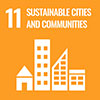Social and Complementary Currencies and timebanks
In recent decades, different manifestations of Social and Complementary Currencies (SCCs) have emerged. SCCs are exchange mechanisms that offer an alernative to legal tender, aiming to stimulate trade within a circle. Their use is justified by the very definition of money as an agreement or law made by the community. Such currencies can be divided into six categories: currencies backed by official currencies to optimize the circulation of the legal tender by retaining it; currencies backed by other goods and/or services to inject liquidity into the community; currencies issued by the public authority that are circulated extensively because of their usefulness for paying taxes; mutual credit systems where members' positive or negative balances equate to the right to ask for the equivalent value of goods and/or services or the duty to provide them, respectively; SCCs issued as bank credit, with counter-cyclical effects to stabilize economic activities; and Fiat SCCs, which come into being without collateral, and need to be carefully managed to avoid accumulations in some businesses or overissue leading to hyperinflation. Each model's advantages and disadvantages must be studied carefully to decide which is most appropriate.
ODS





 Yasuyuki Hirota
Yasuyuki HirotaJapanese doctoral degree student of Social Economics at IUDESCOOP (University Research Institute of Social Economy, Cooperativism and Entrepreneurship), University of Valencia. On a personal level he has been researching and promoting social currency practices since 1999, doing so from a marketing perspective. He has published three books in Japanese on currencies, while his fourth book, on social and solidarity economy, is also soon to published. He is co-founder of the Instituto de la Moneda Social (http://www.monedasocial.org/), and has been writing about this topic in his blog in newspaper El País (list of posts: http://www.monedasocial.org/?p=70) since 2013.



